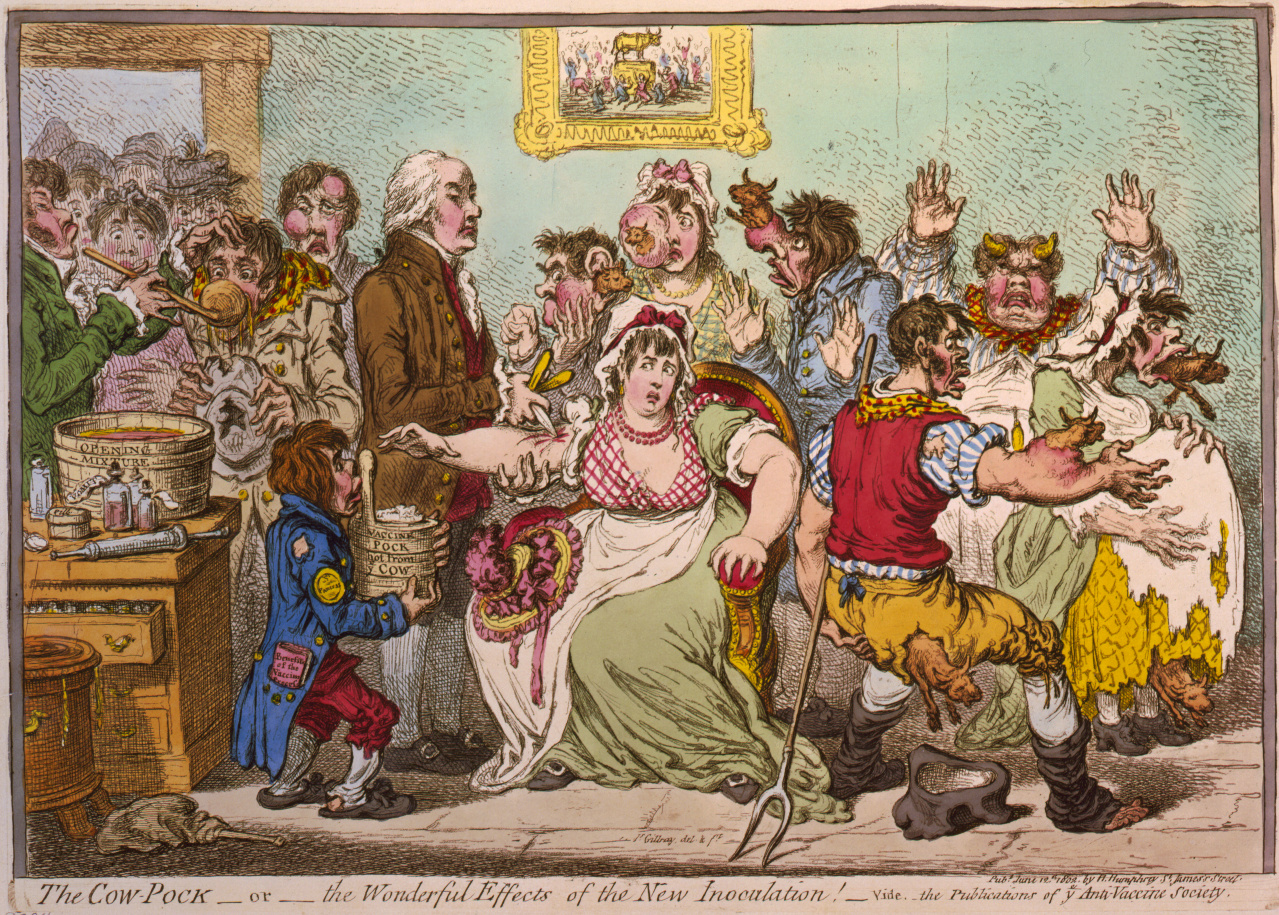 |
| A caricature by James Gillray "The Cow Pock" of Jenner vaccinating patients who feared it would make them sprout cowlike appendages - Library of Congress, Public Domain, Link |
His vaccine practice was not immediately accepted. People feared the counterintuitive idea of introducing a disease into your body in order to fight disease. And the idea of using something from an animal in your body was repulsive. Jenner submitted a paper about his new procedure to the prestigious Royal Society of London, but it was rejected. The president of the Society told Jenner that it was a mistake to risk his reputation by publishing something so controversial.
Jenner published his ideas at his own expense in a short pamphlet in 1798 which was widely read and discussed. Novelist Jane Austen noted in one of her letters that she’d been at a dinner party and everyone was talking about the “Jenner pamphlet.”
The vaccination process evolved but in that time even the idea of germs was unknown so poor sanitation and dirty needles contributed to issues from the process
Jenner used the word vaccine in his writing and his friend, Richard Dunning, used "vaccination" in 1800, but the Oxford English Dictionary credits the French for coining the term vaccine in 1800 and vaccination in 1803. There are cognates in other languages (Italian, vaccine, Portuguese, vacina, and Spanish, vacuna).
No comments:
Post a Comment
All comments need to be approved by the admins. Spam will be deleted.